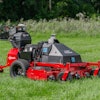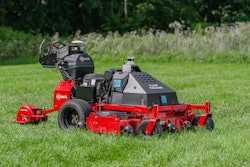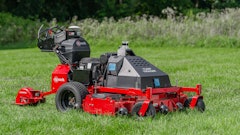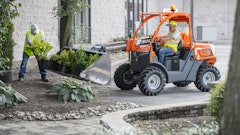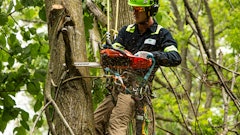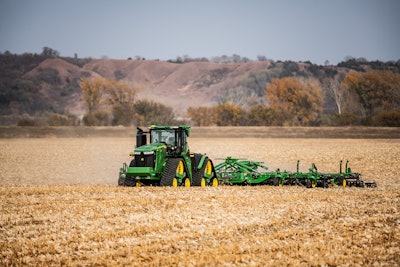
*This content is sponsored by Truck1.
The Labor Crisis in High-Value Crop Farming
Farmers across the globe face significant challenges in maintaining high-value crop production, with labor shortages being among the most pressing issues. For example, regions known for large-scale nut and fruit cultivation often struggle to fill physically demanding, repetitive roles such as air-blast spraying in orchards. Workers can spend up to 10 hours a day driving at just 2 miles per hour, spraying each tree six to eight times a year, often during sweltering summer nights. This grueling work takes a toll on labor availability and operational efficiency, creating an urgent need for technological solutions.
A New Era of Autonomy
John Deere's second-generation autonomy kit, the core of the new 5ML tractor, brings cutting-edge technology to these labor-intensive operations. Equipped with:
Seven advanced cameras for 360-degree visibility.
Lidar sensors for precise depth perception and navigation.
Real-time obstacle detection and avoidance capabilities, including recognition of people, vehicles, irrigation piping, and even bee boxes.
These features combine to create a tractor that can navigate dense orchard canopies with trees towering up to 30 feet tall while ensuring efficiency and safety. Unlike many options available in the new or used tractor market, this innovation stands out with its cutting-edge autonomous capabilities, making it a transformative addition to modern farming. The tractor’s advanced sensors calculate optimal routes through orchards multiple times per second, offering unmatched precision in challenging environments.
Sustainability Meets Innovation: The Electric Tractor
In addition to the diesel-powered 5ML, John Deere introduced a fully electric orchard tractor, signaling a commitment to sustainability. Powered by five immersion-cooled batteries, the electric model offers:
Lower fuel and maintenance costs.
Reduced downtime.
Zero emissions, aligning with farmers’ environmental goals.
The electric tractor is already being tested with real customers, and John Deere plans to scale its deployment alongside the diesel variant. To explore everything from traditional models to the latest innovations in agricultural machinery, farmers can rely on platforms like Truck1, offering a diverse selection of equipment. This approach ensures that farmers have access to solutions that meet both their operational and sustainability goals.
Why It Matters
The introduction of autonomous and electric tractors addresses multiple pressing issues in agriculture:
Labor Shortages: The use of autonomous tractors reduces reliance on human operators for repetitive and physically exhausting tasks, ensuring consistent productivity even in the face of labor shortages.
Sustainability: Electric models help farmers reduce their carbon footprint by eliminating emissions and lowering fuel consumption.
Precision and Safety: Advanced sensors ensure optimal operation in challenging environments, enhancing efficiency and reducing errors.
Cost Efficiency: Reduced operational and maintenance costs free up resources for other farming activities, making high-value crop production more sustainable and profitable.
The Road Ahead
John Deere’s vision extends beyond orchards. By leveraging its second-generation autonomy stack, it aims to scale this technology to new crops and industries. With its ability to adapt to diverse environments, the 5ML tractor exemplifies how innovation can empower farmers, simplify their operations, and pave the way for a more efficient and sustainable future in agriculture.
The John Deere 5ML Autonomous Diesel and Electric Orchard Tractors are more than just machines — they are a testament to the power of innovation in shaping the future of agriculture.


